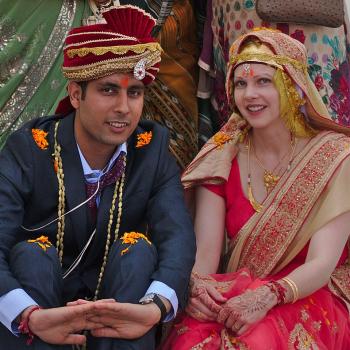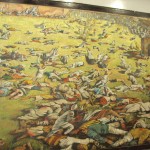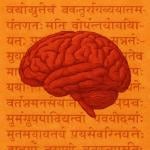Indian Express
Ruby Rizvi is a kamdaani worker. For a day’s labour in which she risks cutting her over 1/2 tola of metallic wires, she gets just Rs 30 while a man doing the same work takes home Rs 50. For intricate work on a sari, she gets just Rs 10 while her male counterparts get Rs 90.
Shakila of Mandiaon is a widowed chikankari worker with four children. Her failing eyesight has forced her to give up her craft and work as a maid. Her children are employed in ‘‘aari zardozi addas’’, earning anything between Rs 10-15 per day. They want to study but her scant resources makes that difficult. Putting together two daily meals is an effort.
Bakridan was thrown out of her house by her husband, who worked with the forest department, several years back. After her husband’s death, when she approached the forest department for his pension, she was told that she had been divorced and could lay no claim to his assets. Her son and his family, who have abandoned her, are receiving her husband’s pension while she is left destitute.
‘‘My locality in Bansmandi reeks of civic neglect. No sweeper ever comes to clean the area, because it is dominated by lower-class Muslims. The drains are choked, the taps run dry most times. The women suffer from anaemia, and if they complain about the workload their husbands threaten talaq,’’ says Rehmatul.
—————————————
Issues like these, specific to the Muslim community, prompted the All India Democratic Women’s Association and city-based non-governmental organisation Tehreek to organise the first Muslim Women’s Conference in Lucknow on Saturday.
And the venue was packed to capacity, with women from 14 mohallas in the Old City recounting horror stories of insanitation, civic neglect and lack of educational and health services.
The women also expressed concern over societal issues like triple talaq and the growing trend of female foeticide within the community, besides demanding rights on ancestral property.
‘‘The dismal Muslim male: female ratio with the population of women 35.6 lakhs less than that of men as per the 2001 census shows an alarming trend which needs to be curtailed,’’ said Syed Nasir, local scribe and scholar, delivering a special report on the occasion.
The women also mooted a charter of demands stressing on the provision of civic amenities, healthcare and education facilities in Muslim-dominated localities, issuance of Below Poverty Line ration cards to needy divorced and widowed women, an end to the custom of triple talaq, provision of maintenance for divorced women and their children, inclusion of conditions from the bride’s side in the nikaahnama, compensation for riot-affected women in Gujarat, and need to curtail female foeticide and pre-natal sex determination tests within the Muslim community.
‘‘I’d like to say this to our maulvis and maulanas. How long will you continue to oppress our women in the name of religion and Shariyat. Can your glance not rise above Sania Mirza’s hemlines to perceive the problems in your community? Women in Islam are calling for the same rights that women of this country enjoy. Is it not time you heard their voice?’’ said Nikhat Fatima, a participant.
‘Look beyond Sania’s skirts’
‘‘There is no place for parallel Shariat Courts in a democracy. Their sudden spurt is a dangerous trend and will not deliver any justice to Muslim women.’’
— Sehba Farooqui
‘‘The poverty and problems of Muslim women cannot be seen by their leaders whose eyes are fixed on Sania Mirza’s skirts. Inki to ankhein phod di jaani chahiye!’’
— Subhashini Ali















